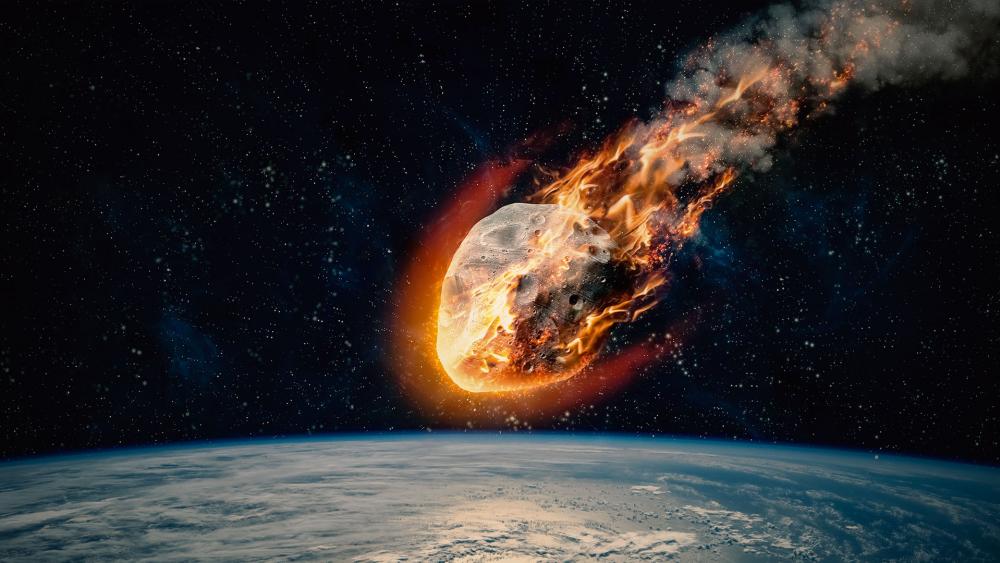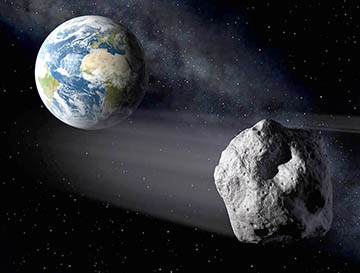

On June 3, 2022, this sterling silver opal pendant hitched a ride on an Earth to Sky Calculus cosmic ray research balloon. "I LOVE YOU MORE" OPAL: Nothing says "I love you" like jewelry from space. If the sunspot had been facing us, we might now be experiencing strong geomagnetic storms with spectacular low-latitude auroras. The explosion registered M9 on GOES satellite X-ray sensors, but the uneclipsed flare was probably much stronger-perhaps even an X-flare. 29th partially eclipsed by the edge of the sun.
#Asteroids earth nasa movie#
This movie from NASA's Solar Dynamics Observatory is a good example. Most of the explosions occured while the sunspot was approaching or even rounding the sun's western limb. The simple reason why: AR3088 was never facing Earth. All the rest sailed harmlessly into space. Only one and maybe two delivered glancing blows of no consequence. More than half of the explosions also produced a coronal mass ejection (CME). Over the past four days, the strangely-magnetized active region produced more than a dozen M-class solar flares:Įach X-ray peak in the graph above produced a corresponding shortwave radio blackout on Earth. ĮARTH JUST DODGED A LOT OF CMES: It seemed like sunspot AR3088 would never stop exploding.

Audio of the teleconference will stream live online at. NASA hopes to solve the problem in time for a new launch window on Sept. The first attempt on Monday was scrubbed when a hydrogen fuel line failed to fully open and properly cool one of the four main engines. 30th, to discuss the upcoming launch of the Artemis I moon rocket.
#Asteroids earth nasa update#
Neutron counts from the University of Oulu's Sodankyla Geophysical Observatory show that cosmic rays reaching Earth are slowly declining-a result of the yin-yang relationship between the solar cycle and cosmic rays.ĪRTEMIS UPDATE LATER TODAY: NASA will hold a teleconference at 6 p.m. Credit: SDO/HMIĬosmic Rays Solar Cycle 25 is beginning, and this is reflected in the number of cosmic rays entering Earth's atmosphere.

Further, now instead of one large boulder, there are hundreds of smaller but equally deadly stones heading for the planet which will essentially cause an asteroid rain, multiplying the problem.Sunspot AR3089 has a delta-class magnetic field that poses a threat for X-class solar flares. At such a high speed, even if the missiles were able to break down the asteroid into smaller pieces, changing its direction will be impossible due to the high velocity of the space rocks. Asteroids are extremely fast moving objects, most moving between a speed of 15,000- 35,000 kilometers per hour. Let us break down the problem with shooting down an asteroid too close to the Earth. Asteroids too close to Earth cannot be shot down, says NASA No known weapon system could stop the mass because of the velocity at which it travels – an average of 12 miles per second”. On the FAQ section of its Planetary Defense webpage, NASA states, “An asteroid on a trajectory to impact Earth could not be shot down in the last few minutes or even hours before impact. Shockingly, NASA has explicitly stated that asteroids which are already too close to the Earth cannot be shot down. Known as anti-asteroid technology, these primarily include using nuclear weapons to shoot down an asteroid into small pieces before it can hit us. And with the threat of extinction, just like the dinosaurs, looming over our heads, NASA is testing out various strategies to build a planetary defense mechanism which can counter asteroid strikes. Just last week, the Earth witnessed four different asteroids approaching dangerously close to it. With so many asteroids flying left and right past the Earth these days, scientists realize it is a question of when and not if an asteroid will strike the Earth.


 0 kommentar(er)
0 kommentar(er)
